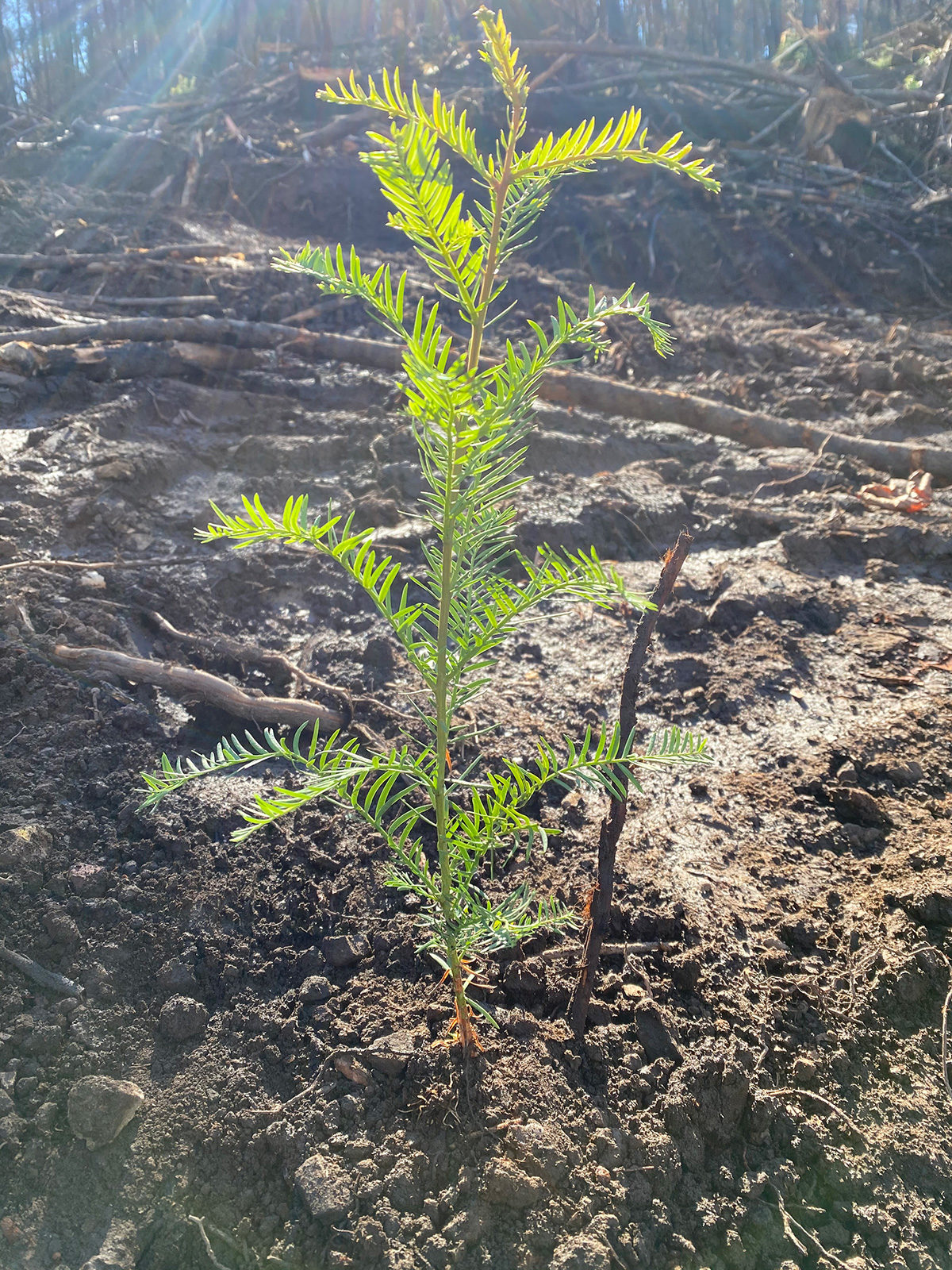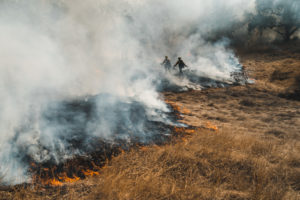
You can smell a burned forest before you see it. An acrid scent hangs in the air for a long time after the flames are out. When my husband, daughter, and I drove into an area of Sonoma County consumed six months ago by the LNU fire, we were steeped in that smell and flanked by hillsides of black spires and copper-colored leaves, the remains of a redwood, madrone, and tanoak forest. We were there to help a dear friend whose family home was obliterated in the blaze.
Kathleen’s great-grandfather and -grandmother moved to the land in 1921 and lived in canvas tents as they built the house that burned last summer. In letters to their parents they described the land as thick with vegetation, redwoods, and oaks. The last big fire must have been before then.
Fourteen of us gathered to help Kathleen and her family, friends I’ve had for half my life. For years, Kathleen had been hosting this group and many more at her great-grandparents’ ranch, where we slept on the floor, camped outside, and saved the beds for whoever had the youngest kid. There’s a photo of Kathleen, our friend Anjuna, and myself standing side by side at the ranch, all three of us pregnant, just six to eight weeks apart. Those babies are 10 years old now, and they were at the ranch with gloves and shovels, along with all us grown-ups, ready to pitch in. The plan was to plant 500 redwood seedlings. It was a first small step in supporting the forest and Kathleen’s family.
We spread out across the scorched hills and started to dig. When I turned out a wedge of wet soil, I saw a layer of blackened duff covering rich brown earth, wriggling with fat earthworms. I put the two- to three-year-old redwood sapling in the ground, loosened its roots and whispered, “It’s time to spread out now. Release your chemical signals and find some arbuscular mycorrhizal fungi. They’re gonna help you.” Seriously, I said that.
The relationship between arbuscular mycorrhizal fungi and 90 percent of all plants, including redwood trees, is the subject of this issue’s feature story “Listen Closely.” AM fungi and plant roots share resources and information in a very complex give-and-take, like friends might. An untold number of these plant-fungi connection and cooperation points exist underground in a forest. “Entirely different kingdoms of life coincide to connect massive swaths of an ecosystem,” writes UC Berkeley plant biologist Lorenzo Washington in the feature essay. “Life is even more connected than we thought . . .”
How communities, of all sorts, negotiate coexistence is at the heart of this and every issue of Bay Nature. Together we will get through this spring of slow rebuilding and renewal, taking lessons from plants and fungi, those not-so-distant kingdoms of life.

